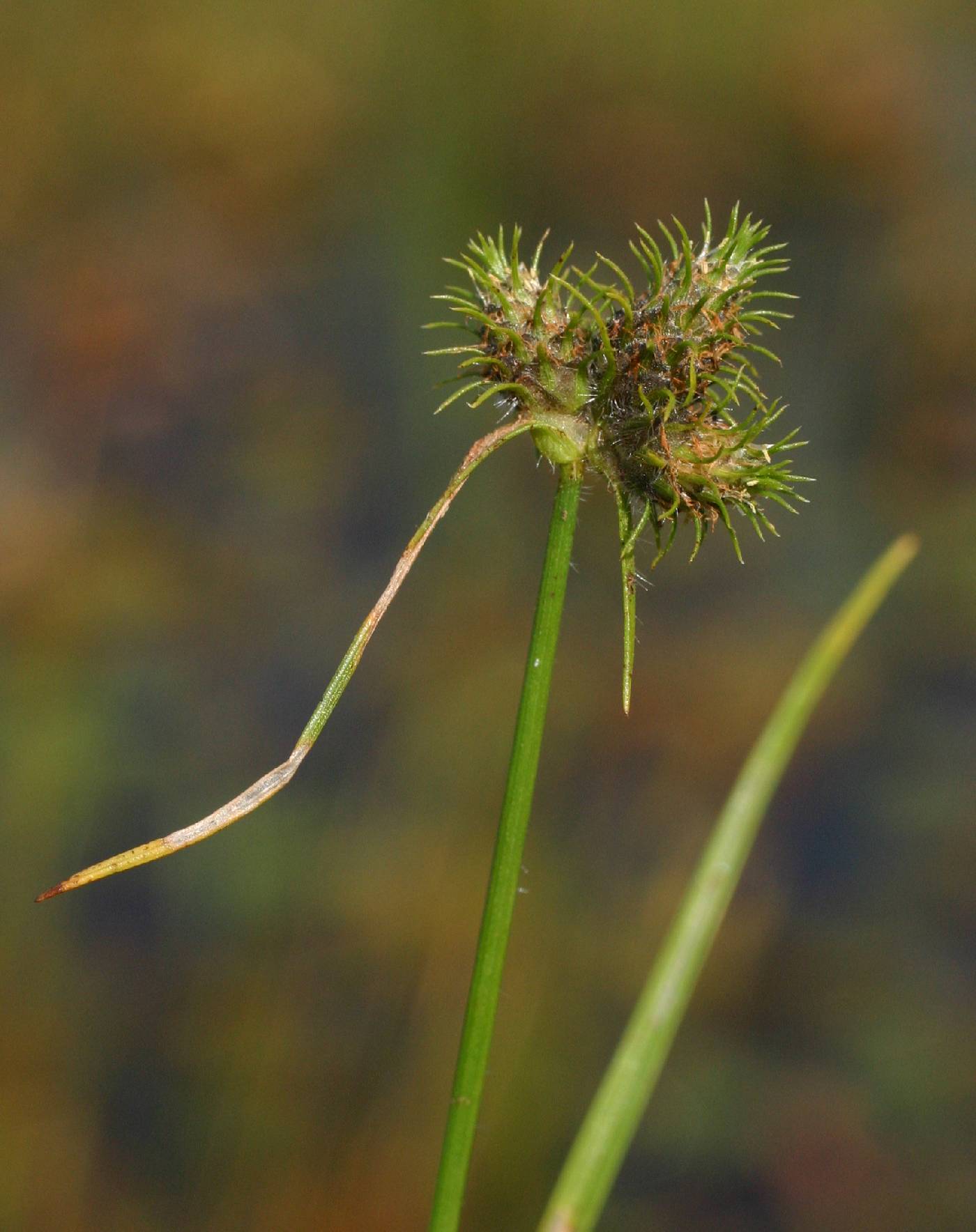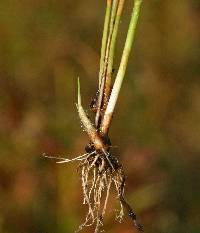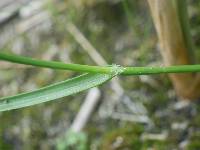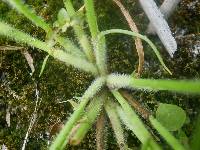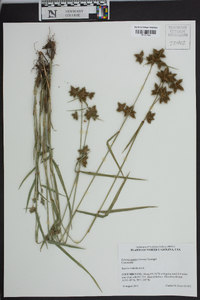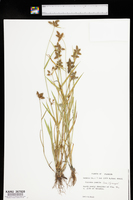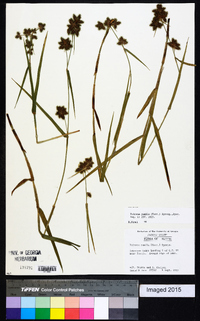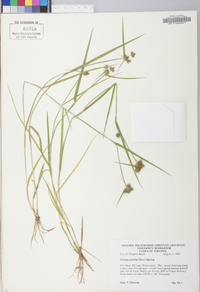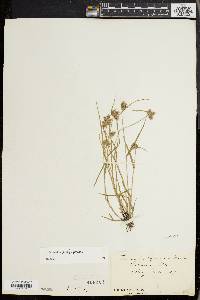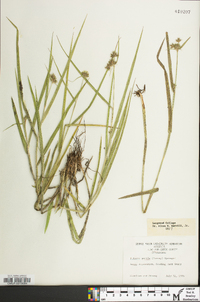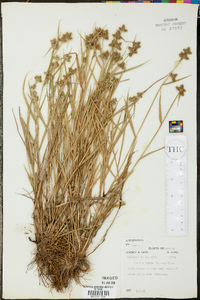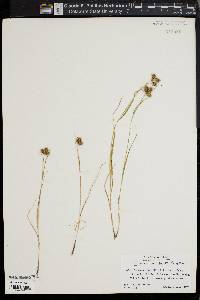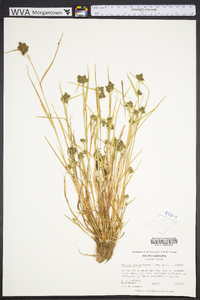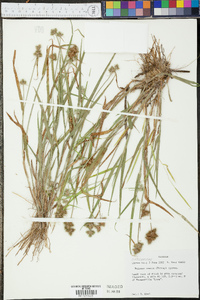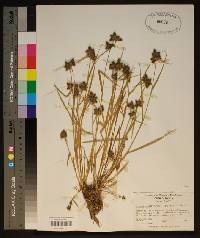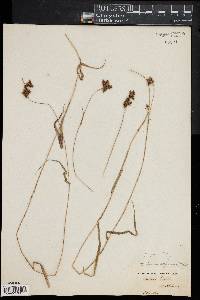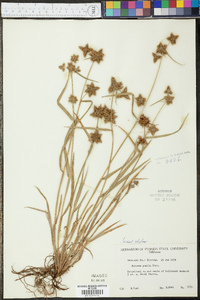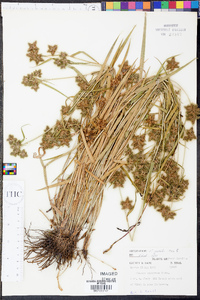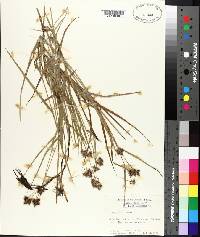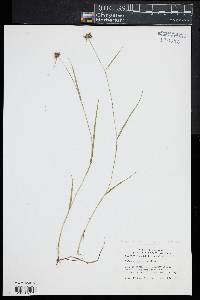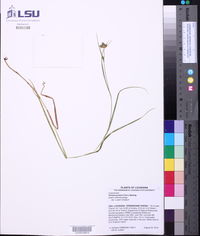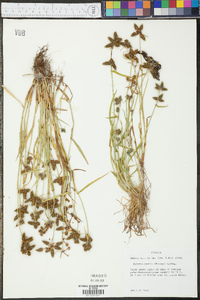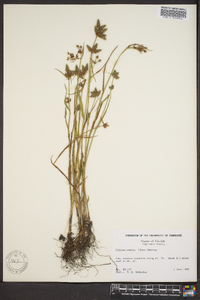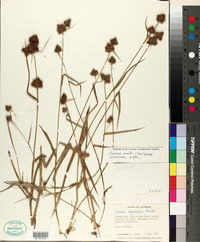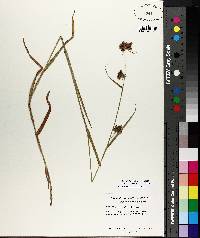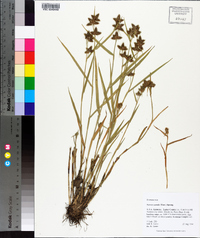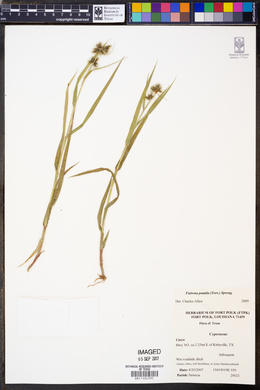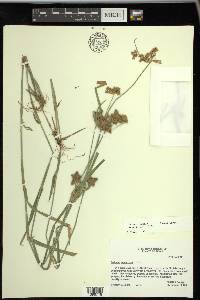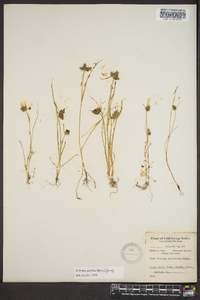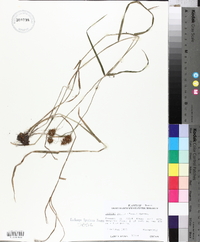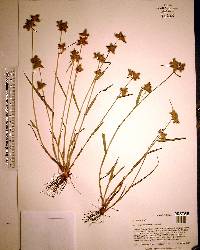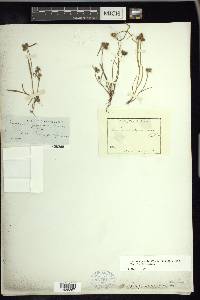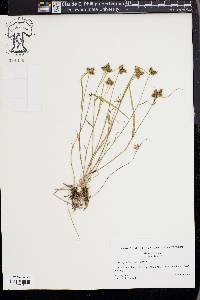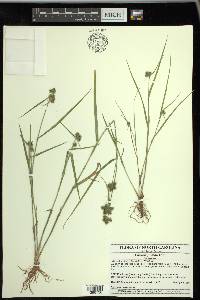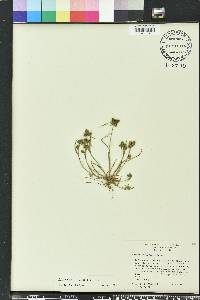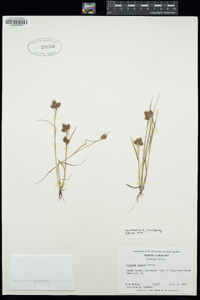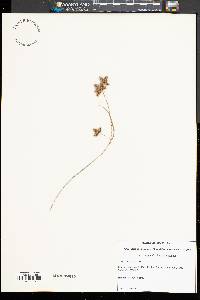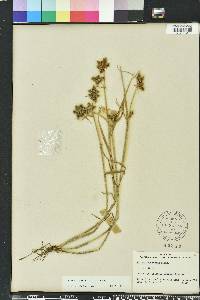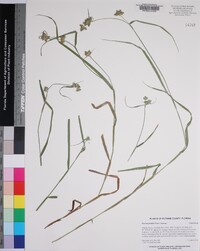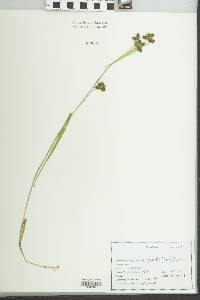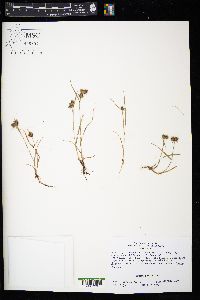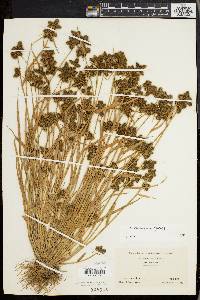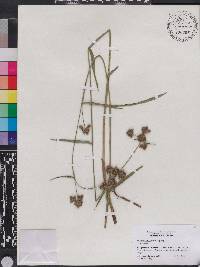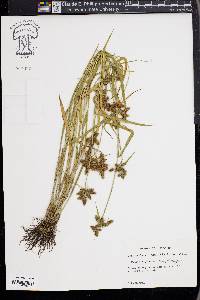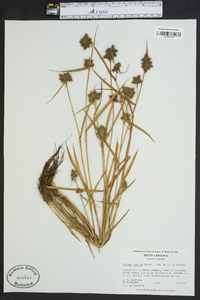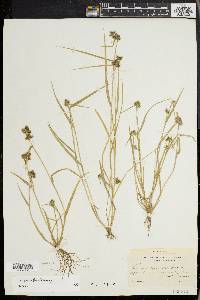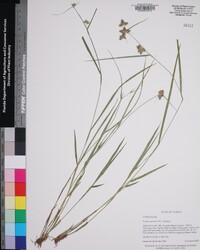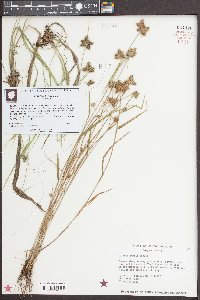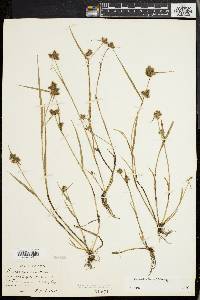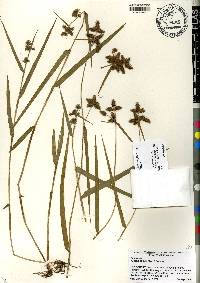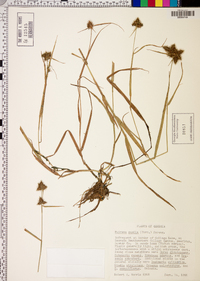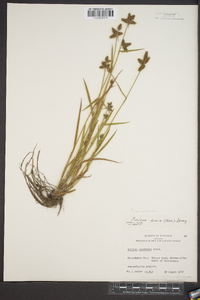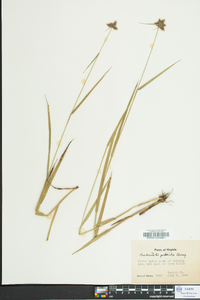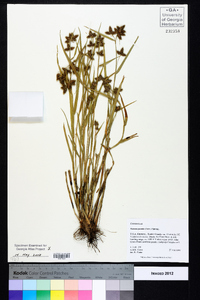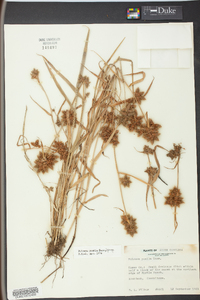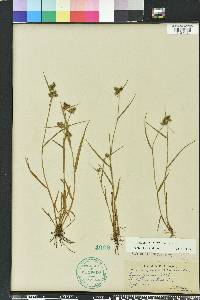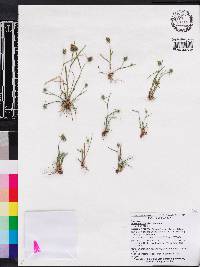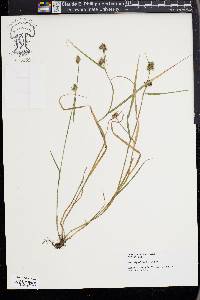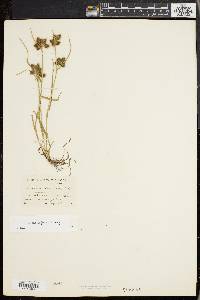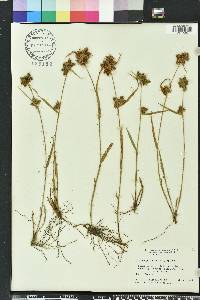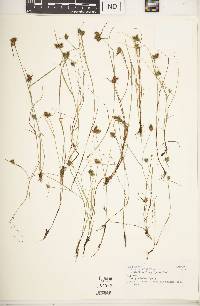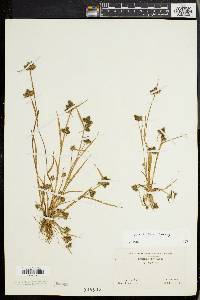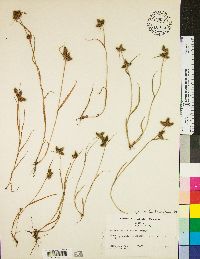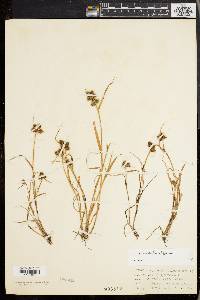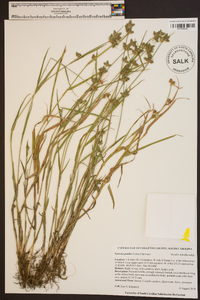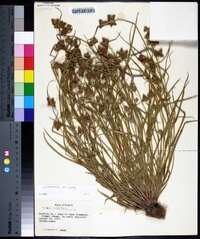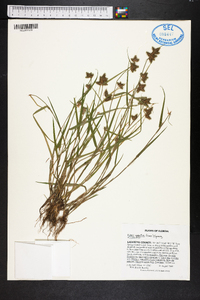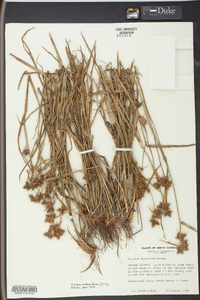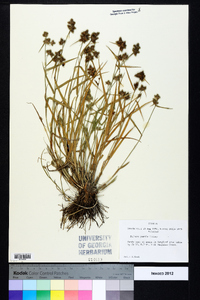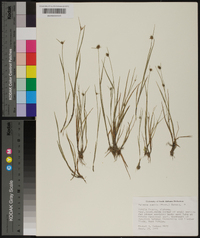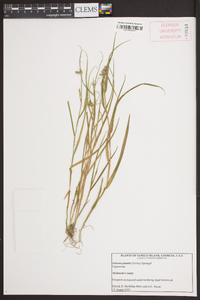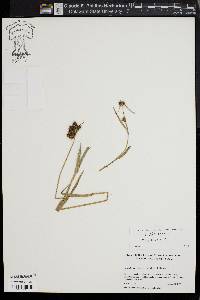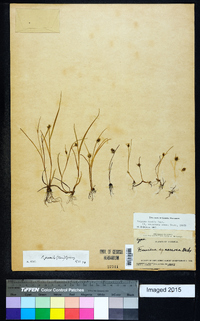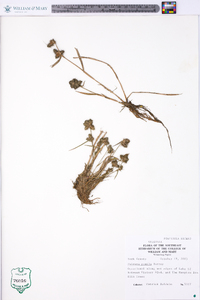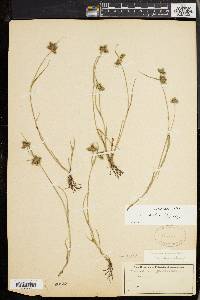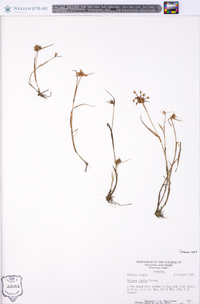Fuirena pumila
|
|
|
|
Family: Cyperaceae
Dwarf Umbrella Sedge
|
Herbs annual, cespitose, (8-)20-60 cm. Culms erect or spreading, slender, stiff. Leaves: sheaths hirsute; principal blades linear to lance-linear, 5-12 cm, hirsute-hispid-ciliate, surfaces strigose-hispid or glabrous. Inflorescences in solitary terminal clusters or several terminal clusters, less often from proximal 1-2 nodes, principal involucral bract mostly exceeding compound or cluster. Spikelets lance-ovoid to cylindric, 5-8(-12) mm, apex acute; fertile scales oblong to obovate, 2.5-3 mm; cusp excurved, nearly length of scale, scabridulous; median ribs 3, strong. Flowers: perianth bristles extending at least to base of perianth blades, often near to tips, retrorsely barbellate; perianth blades long-clawed, mostly ovate, base 3-5-ribbed, apex slenderly acuminate, incurved, awned; anthers 1-3, 0.5-0.7 mm. Achenes: stipe slender; body angles wirelike, faces lustrous, deep brown to red-brown, 1 mm; beak slender, stiff, tip papillate. 2n = 46. Fruiting summer-fall. Moist to wet pond shores, seeps, savannas and swales, moist sandy waste places; 0-200 m; Ont.; Ala., Del., Fla., Ga., Ind., La., Md., Mass., Mich., N.J., N.Y., N.C., R.I., S.C., Tex., Va. Annual herb, tufted 10 cm - 0.6 m tall Leaves: alternate, 5 - 12 cm long, 3 - 5 mm wide, flat, linear to narrowly lance-shaped, parallel-veined, sometimes hairy, with ligules and a sheathing base that encloses the stem. Ligules tubular, rough. Sheaths strongly veined and more or less hairy. Inflorescence: a mostly terminal, stalkless head of spikelets (sometimes a solitary spikelet), subtended by two or three bracts. Principal bract more or less leaf-like, mostly surpassing the inflorescence. Flowers: tiny, subtended by a floral scale, lacking sepals and petals, bearing a set of three bristles alternating with a set of three scale-blades. Bristles stout, sharp, shorter than inner set of scale-blades. Scale-blades long-stalked, egg-shaped, three- to five-ribbed basally, incurved into a bristle at the apex. Stamens one to three, long-exserted. Anthers one to three, about 0.5 mm long. Pistil one. Style linear, three-cleft. Fruit: a one-seeded achene, long-stalked, brown to reddish brown, to 1 mm long, three-angled (angles wire-like), slender-beaked with a bumpy tip. Seed with a thin, non-adherent wall. Culm: spreading or upright, stiff, 10 cm - 0.6 m long, slender, three- to five-angled in cross-section, solid. Spikelets: solitary or in one to three clusters, 0.5 - 1.5 cm long, lance- egg-shaped to cylindrical with a sharply pointed apex. Floral scales spirally arranged, 2.5 - 3 mm long, oblong to reverse egg-shaped with a curved bristle (bristle nearly as long as scale), strongly three-ribbed down the middle, hairy. The lowest one to three scales are often empty. Similar species: No information at this time. Flowering: late July to mid-September Habitat and ecology: Rare in the Chicago Region. Has been found along lakes, ponds, marshes and on a floating muck mat. Occurence in the Chicago region: native Etymology: Fuirena is named after George Fuiren (1581-1628), a Danish botanist and physician from Copenhagen. Pumila means small or dwarf. Author: The Morton Arboretum Tufted annual 1-6 dm; sheaths hispid-hirsute to subglabrous; larger blades 5-12 cm נ3-5 mm, hairy or scabrous at least along the margins; spikelets 7-15 mm, in 1-3 clusters (or solitary); scales 2.5-3.5 mm, the usually 3 strong median nerves convergent and exserted to form a recurved-spreading awn nearly as long as the scale; bristles retrorsely barbellate, reaching at least to the base of the pet-blades, these ovate, slenderly incurved into an apical bristle; anther 1, 0.5-0.7 mm; 2n=46. Moist to wet, usually sandy places, sometimes weedy; Mass. to Fla. and Tex., chiefly on and near the coastal plain, and disjunct to s. Mich. and n. Ind. Gleason, Henry A. & Cronquist, Arthur J. 1991. Manual of vascular plants of northeastern United States and adjacent Canada. lxxv + 910 pp. ©The New York Botanical Garden. All rights reserved. Used by permission. From Flora of Indiana (1940) by Charles C. Deam This sedge is very local, having been found in only a few places in two counties. It grows in moist sand in interdunal swamps and in wet sand on the borders of lakes. I found it to be rather frequent in wet sand on the south side of Walker Lake in Porter County. ...... Indiana Coefficient of Conservatism: C = 10 Wetland Indicator Status: OBL |
|
|
|

